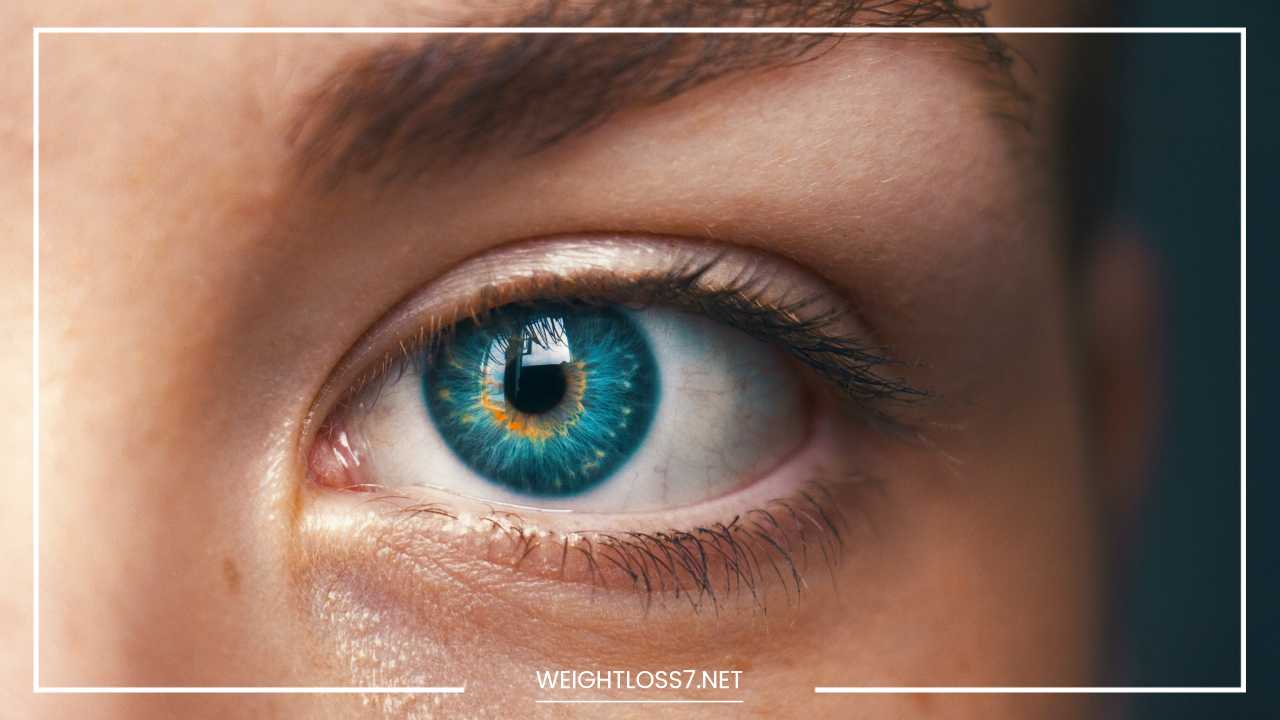How the Eye Can Predict Disease

Disease Prediction
How the Eye Can Predict Disease: A Window to Your Overall Health
Our eyes, those captivating windows to the soul, hold a secret beyond their ability to capture the world’s beauty. They act as a living window into our overall health, offering valuable clues to potential diseases lurking beneath the surface.
While routine eye exams have always been crucial for maintaining good vision, recent advancements have unveiled the eye’s remarkable potential as a diagnostic tool.
This exciting field, known as oculomics, is revolutionizing the way we approach preventative healthcare by harnessing the power of the eye to predict and detect a wide range of diseases.
Unveiling the Secrets of the Retina: A Microscopic Marvel
The key player in this fascinating health connection is the retina, a light-sensitive layer at the back of the eye. Often likened to film in a camera, the retina captures light and transforms it into electrical signals that travel to the brain, creating the vibrant tapestry of our vision. But the retina’s significance extends far beyond mere light detection.
This intricate network of blood vessels and nerve fibers acts as a microcosm of our body’s internal state. By peering through the lens during an eye exam, ophthalmologists (eye doctors) gain valuable insights into various aspects of our health, including:
- Blood Vessel Health: Unlike the larger blood vessels hidden deep within our bodies, the retina’s blood vessels are some of the thinnest and most easily observable. Their condition can reveal signs of high blood pressure, a leading risk factor for heart disease and stroke. Changes in the blood vessel structure can also indicate the presence of diabetes, a condition that damages blood vessels throughout the body. Early detection of these underlying conditions allows for prompt treatment and management, potentially preventing serious health complications.
- Nervous System Health: The optic nerve, a bundle of nerve fibers that transmits visual information from the retina to the brain, is an extension of the brain itself. Examining the optic nerve during an eye exam can sometimes indicate neurological conditions like multiple sclerosis, which affects the communication between the brain and the rest of the body. Detecting these conditions early allows for early intervention and improved management of symptoms.
- Changes in Blood Cell Production: The retina can also show abnormalities in the production of red blood cells, the oxygen-carrying workhorses of our circulatory system. These changes can potentially indicate conditions like anemia, a condition characterized by a deficiency of red blood cells, leading to fatigue and other symptoms.
Beyond Vision: Early Detection of Eye Diseases
Traditionally, eye exams have focused on detecting and managing eye diseases that can lead to vision loss. Early detection of these conditions is crucial for preserving precious eyesight. Some of the most common eye diseases identified during routine eye exams include:
- Glaucoma: This “silent thief of sight” damages the optic nerve due to increased pressure in the eye. Regular eye exams allow for early detection of glaucoma before vision loss occurs. Ophthalmologists can examine the optic nerve and the fluid drainage channels in the eye to identify signs of glaucoma and initiate treatment, which typically involves medication or surgery to lower eye pressure and prevent further damage.
- Cataracts: A clouding of the lens of the eye, cataracts lead to blurred vision, difficulty seeing at night, and increased sensitivity to light. Early detection through a comprehensive eye exam allows for timely cataract surgery, a highly successful procedure that restores vision by replacing the clouded lens with a clear artificial one.
- Macular Degeneration: Age-related macular degeneration (AMD) affects the macula, the central part of the retina responsible for sharp central vision used for tasks like reading and driving. Early detection of AMD is crucial, as treatment options like injections or laser therapy can slow the progression of the disease and preserve vision.
However, the eye’s diagnostic capabilities extend far beyond these well-known eye conditions.
Oculomics: A New Frontier in Disease Prediction
Oculomics, a rapidly growing field of research, delves deeper into the eye’s potential as a diagnostic tool. By analyzing retinal images with advanced technologies like artificial intelligence (AI), researchers are unlocking exciting possibilities for predicting and detecting a wider range of diseases.
- AI-powered Disease Prediction: Pioneering studies have developed AI systems trained on vast datasets of retinal images. These systems can analyze subtle changes in the blood vessels and nerve fibers of the retina, potentially predicting the risk of developing diseases like heart disease, stroke, and even neurodegenerative diseases like Parkinson’s disease. By identifying individuals at high risk, doctors can recommend preventative measures like lifestyle modifications or early treatment interventions to reduce the risk of developing these conditions.
- Early Detection of Systemic Diseases: Diabetes is a chronic condition that affects how the body regulates blood sugar levels. Diabetic retinopathy, a complication of diabetes, damages the retina’s blood vessels. The early detection of diabetic retinopathy during an eye exam allows for better management of diabetes and potentially reduces the risk of vision loss. Similarly, research suggests that changes in the retina, particularly in the blood vessel structure and the accumulation of specific proteins, may indicate early signs of Alzheimer’s disease, a neurodegenerative disease that causes memory loss and cognitive decline. Early detection of Alzheimer’s, while there is no cure currently, allows for the development of treatment plans to manage symptoms and improve quality of life for patients.
The Expanding Landscape of Oculomics Applications
The potential applications of oculomics extend far beyond disease prediction and early detection. Here are some exciting possibilities for the future:
- Personalized Medicine: By analyzing retinal data alongside other health information like blood tests and genetic data, doctors may be able to develop personalized treatment plans and preventative measures tailored to an individual’s unique health profile. This approach, known as precision medicine, has the potential to revolutionize healthcare by providing more targeted and effective interventions.
- Non-invasive Screening Tools: Eye exams are a relatively non-invasive and painless procedure. Widespread adoption of AI-powered retinal analysis could allow for large-scale screening programs to identify individuals at risk for various diseases, enabling early intervention and improved health outcomes. These programs could be particularly beneficial in remote areas or for individuals who may not have access to regular healthcare services.
- Remote Monitoring: Technological advancements could pave the way for the development of telemedicine tools that utilize retinal imaging to remotely monitor patients with chronic conditions. This could be especially valuable for managing diseases like diabetes or monitoring the progression of neurodegenerative diseases.
The Power of Proactive Eye Care
While the eye’s potential for predicting disease is a powerful tool, it’s important to remember that eye exams are still primarily for maintaining good vision. Here are some steps you can take to safeguard your precious eyesight and contribute to your overall health:
- Schedule Regular Eye Exams: The American Academy of Ophthalmology recommends a comprehensive eye exam every two years for adults with no significant risk factors. However, individuals with a family history of eye disease, diabetes, or other chronic health conditions may need more frequent examinations.
- Maintain a Healthy Lifestyle: Eating a balanced diet rich in fruits, vegetables, and omega-3 fatty acids, exercising regularly, and getting enough sleep are all crucial for maintaining good eye health. These healthy habits can help reduce the risk of developing chronic conditions like diabetes and high blood pressure, which can contribute to eye problems.
- Protect Your Eyes from UV Rays: Excessive exposure to ultraviolet (UV) radiation from the sun can increase the risk of developing cataracts and macular degeneration. Wearing sunglasses that block UVA and UVB rays is essential for protecting your eyes from sun damage.
- Know Your Family History: Certain eye diseases, like glaucoma, can have a genetic component. If you have a family history of eye disease, it’s important to inform your eye doctor so they can monitor you more closely.
Limitations and Considerations of Oculomics
While oculomics offers exciting possibilities, it’s important to acknowledge current limitations and ongoing research considerations:
- Accuracy and Specificity: AI-based disease prediction from retinal images is still under development. While studies show promise, the accuracy and specificity of these systems need further refinement. False positives, where the system incorrectly identifies someone as being at risk for a disease they don’t have, and false negatives, where the system misses an existing condition, can lead to unnecessary anxiety or missed diagnoses.
- Data Bias: AI systems are only as good as the data they are trained on. If the training data is biased, for example, by lacking diversity in ethnicity or age, the resulting AI model may not be accurate for all populations. Researchers are actively working to address data bias and ensure the development of inclusive and reliable AI tools.
- Ethical Considerations: The widespread use of AI for disease prediction raises ethical concerns. Issues like data privacy, access to healthcare, and potential discrimination based on predicted risk factors need careful consideration and ethical frameworks to ensure responsible implementation.
- Integration with Traditional Diagnostics: The role of oculomics is envisioned as complementary to traditional diagnostic methods, not a replacement. Retinal imaging should be used alongside other diagnostic tools like blood tests, medical history, and physical examinations for a comprehensive evaluation.
The Road Ahead: Advancing Oculomics Research
Despite these limitations, researchers are actively working to address them and advance the field of oculomics. Here are some key areas of focus:
- Refining AI Algorithms: Researchers are continuously improving AI algorithms to enhance their accuracy and specificity for disease prediction. This includes developing larger and more diverse datasets for training, incorporating new machine learning techniques, and refining the interpretation of results from retinal analysis.
- Standardization and Validation: Standardizing retinal imaging techniques and establishing clear protocols for interpreting results are crucial for ensuring the reliability and widespread adoption of oculomics in clinical practice.
- Clinical Trials: Further clinical trials are required to validate the effectiveness of AI-powered disease prediction from retinal images. These trials will assess the impact of this technology on patient outcomes and healthcare systems.
Empowering Individuals: Knowledge is Power
While oculomics holds promise for the future of healthcare, the power to take charge of your health lies with you today. Here are some actions you can take:
- Be Proactive about Eye Health: Schedule regular eye exams and discuss your family history and any health concerns with your eye doctor.
- Maintain a Healthy Lifestyle: A balanced diet, regular exercise, and managing chronic conditions like diabetes and high blood pressure can significantly impact your overall health, including your eye health.
- Stay Informed: Keep yourself updated on the latest advancements in oculomics and discuss the potential benefits and limitations with your healthcare provider.
By integrating regular eye care with a healthy lifestyle and staying informed about new developments, you can become an active participant in safeguarding your vision and overall health.
Final Word: A Brighter Future for Eye Health
The eye, once a silent observer, is now emerging as a powerful tool for preventative healthcare. Oculomics holds immense potential for revolutionizing the way we approach disease management, enabling early detection and paving the way for personalized treatment plans.
While ongoing research is crucial to address limitations and ethical considerations, the future of oculomics is undeniably bright.
By embracing this exciting field and prioritizing our eye health, we can empower ourselves to take charge of our well-being and create a healthier future for ourselves and generations to come. Remember, a healthy eye is not just a window to the world, but a window to a healthier you.

















